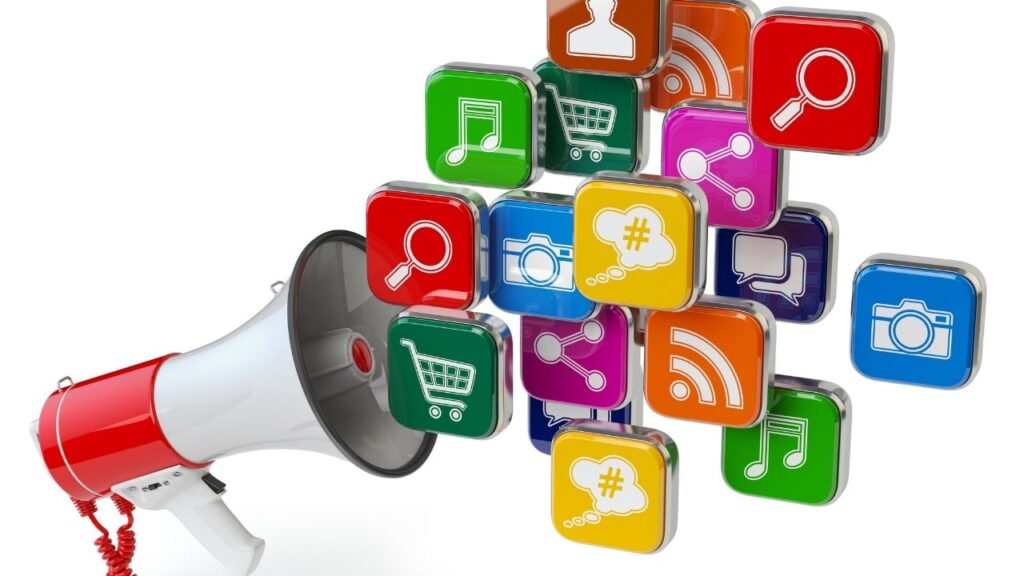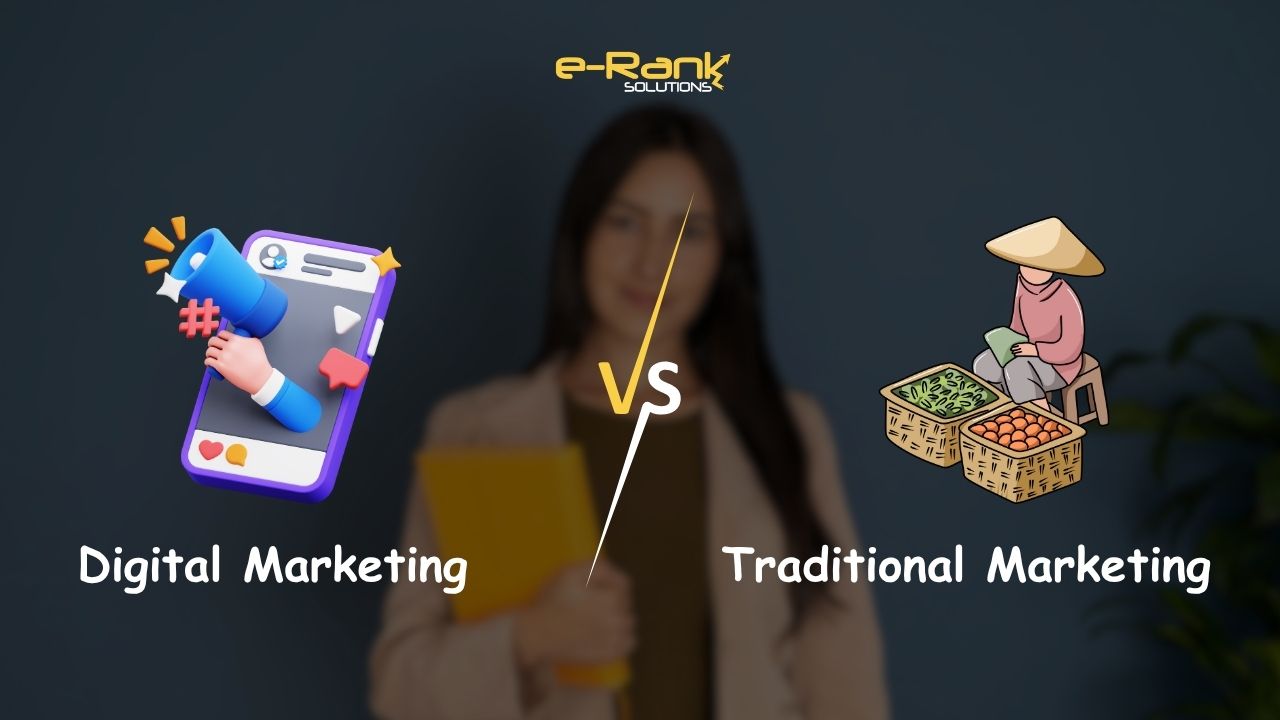Why would someone choose to buy from you instead of your competitor, or why do you choose any particular brand while purchasing something? Ever wonder? Marketing is not just a way to make sales, but it’s about building connections and nurturing relationships with your consumers. It’s about gaining and maintaining trust, reliability, and credibility.
But recently, the marketing styles have changed; they are not just simple traditional marketing methods on television, banners, billboards, or newspapers. Now we are 24X7 surrounded by advertising and being nudged towards a particular brand, and it’s all because of digital marketing.
This shift raises an essential question: how are traditional and digital marketing different from each other? And which one builds strong brand-consumer relationships in today’s evolving digital world?
What is Traditional Marketing?
Traditional marketing is offline promotions of brands and their products/ services, and it is the type of marketing we have been surrounded by for decades. Traditional marketing is often viewed as trustworthy and mass-reaching, and supremely effective for brand awareness. These include:
- Print advertising (newspapers, magazines, brochures)
- Broadcast advertising (TV ads, radio ads)
- Outdoor advertising (commercials on billboards, banners, posters)
- Direct mail & telemarketing
Example: A full-page mainstream newspaper ad or a half-minute TV spot during a prime-time show.
Advantages of Traditional Marketing

- High Credibility: Newspapers and television ads are often trusted by people, because they are often advertised by a brand that is reliable and well-known to people for ages. Understand it simply, if there’s a commercial on BBC News within their prime shows, you’re most likely to consider it trustworthy.
- Mass Reach: A wider range of audience, from kids to oldies, from tech-savvies to luddites, can be reached by traditional marketing.
- Carved into Minds: Big billboards and TV jingles often leave a lasting impression and give us nostalgia. You can highly retain an advertisement on a hoarding while travelling on highways.
- Local Success: It’s an amazing means for small businesses to target and build specific regional awareness.
Example: Do you remember the echoing tagline ‘Got Milk?’ One of the most iconic traditional ads in the U.S. was this 1993 ‘Got Milk?’ commercial. The ad was directed by Michael Bay. It showed a history nerd eating a peanut butter sandwich and unable to say Aaron Burr because he had no milk with the sandwich. It’s witty remark, relatability, and never-forgetting tagline, Got Milk? became a cultural trend, showing how a simple TV spot can leave a lasting and memorable impact.
What is Digital Marketing?
Digital marketing is an evolved successor of traditional marketing methods, which uses the internet and online technologies to promote products and services. Today, 70.5% of the world’s population uses mobile phones and spends an average of 6 hours and 40 minutes of screen time globally. This is enough reason for changing marketing dynamics and booming digital marketing techniques. It stands out because of its data-driven, highly targeted, and measurable strategies.
The following digital marketing verticals are:
- Social media marketing (Facebook, Instagram, LinkedIn, TikTok) is the most used and one of the cost-effective digital marketing tools.
- Search engine optimization (SEO)
- Pay-per-click (PPC)
- Content marketing (blogs, videos, podcasts)
- Email marketing
Example: Targeted ad campaign on Facebook or ranking on Google for ‘best digital marketing agency’.
Advantages of Digital Marketing

- Cost-Effective: You can run a social media ad campaign for as little as $5/day. It is a great way to reach a larger audience economically, a boon for small businesses and individuals.
- Target Advertising: Brands can specifically target people by age, location, interest, and behavior.
- Measurable: Every click, every view, and conversion can be easily tracked, and helps make informed decisions time to time and narrow identified gaps.
- High Reach and Engagement in Marketing: The direct interaction with customers leads to several benefits, including customer satisfaction by understanding gaps.
- Scalability: You can adjust and make necessary changes in real time in campaigns.
82%+ marketers are actively investing in content marketing.
Challenges in Traditional Vs Digital Marketing
| Aspect | Challenges in Traditional Marketing | Challenges in Digital Marketing |
| Cost | Requires a hefty budget for production and placement | Competitive ad bidding can raise CPC/CPA quickly. |
| Targeting | Minimal target or niche market, mostly small reach. | Vulnerable to over-target marketing or algorithm shifts can lead to missing out on audiences. |
| Measurability | Difficult to track ROI and audience impact. | Too many metrics can be overwhelming; require expertise to interpret. |
| Flexibility | Hard to change once an ad is published (static campaigns). | Campaigns can be paused/ edited, but need constant monitoring. |
| Engagement | One-way communication, no direct interaction. | Oversaturation → users may ignore or block ads. |
| Accessibility | The younger generation is less likely to interact with traditional media like newspapers or magazines, and even TVs, in the OTT era. | High chance of missing out on less pro-tech and the older generation. |
| DevelopmentCurve | Relies on creative and media buying, simpler skillset. | Requires ongoing learning of tools, platforms, and algorithm updates. |
Which One to Choose: Traditional or Digital?
If I answer this in one word, I would say none of them is a universal option; it completely depends on the goal & requirements of your business, and the type of audience you wish to cater to.
Traditional marketing is most useful when aiming for a local, classic, or less tech-savvy set of audience. Example: A local vendor or any small business food business may find radio, local news channels, or pamphlets more effective than Instagram ads. It also helps develop authenticity, credibility, and mass awareness, making it of utmost value for established brands.
On the other hand, digital marketing shines bright when precision, budgeting, and future-proof design matter. It can help in real-time performance tracking, aim at specific demographics, and make adjustments instantly. It serves best for SMEs, with highly data-backed results helping to cut down marketing costs.
Big names like Apple, Old Spice, Porsche, and more are smartly balancing between digital and traditional marketing and leveraging both to their optimum levels. Therefore, instead of choosing any one, businesses must use a hybrid strategy for substantial and exponential growth.
Future of Marketing
You can not overlook the fact that the marketing and advertising future is digitally advanced, fact-based, and made-for-you. Now, businesses are speedily using the power of AI and automation to design marketing strategies. In 2024 Wall Street Journal reported the projected growth of global advertising expenditure to exceed $1 trillion.
There is also a great emphasis on first-party data, as businesses are using it for more tailored and privacy-compliant marketing. And the innovative inclusion of conversational commerce, where customers can engage with brands in real-time conversations, is facilitating quick buys and customer satisfaction. Also, omnichannel marketing is not optional anymore; if you want customers to receive an all-inclusive brand experience, whether online or offline. The omnichannel marketing approach is important to build brand loyalty and improve customer retention rates.
Conclusion
Traditional marketing methods and digital marketing techniques both have their USPs. Though it’s better to take advantage of both simultaneously, you can also choose either of them in alignment with your business objectives. Marketers can adhere to roots while embracing trends to be a well-positioned and successful name in the market.
Related: In-depth Analysis: The Fine Line Between Marketing and Selling
Related: SEO Tool Battle: SEMrush vs Ahrefs – Which is Right for You?

